Laos is a country where food is not just sustenance but a deeply rooted cultural experience. Renowned for its fresh ingredients, bold flavors, and balance of savory, spicy, sour, and sweet elements, Lao cuisine offers a culinary adventure for every traveler. From aromatic soups to vibrant salads, each dish tells a story of tradition, heritage, and the country’s connection to nature.
Secure Your Laos eVisa Before You Start Your Culinary Journey
Get your Laos eVisa in advance and travel to Laos without any troubles. Actually, this electronic visa helps you smoothly enter the country without wasting much of your precious time, enabling participation in the fascinating food culture of Laos. In order to apply for Laos eVisa:

With your eVisa in hand, you’ll be ready to explore the rich flavors of Laos, from traditional dishes like laap and khao soi to its bustling street food markets.
Introduction to Lao Cuisine: A Mix of Flavors and Culture
Lao cuisine is a broad spectrum of flavors deeply rooted in the culture, history, and geography of the country. Characterized by fresh ingredients and pungency, Lao food is a harmonious combination of spicy, sour, salty, and sweet that creates unforgettable taste experiences. Lao cuisine mostly focuses on sticky rice, from being the crucial ingredient for life to the representation of the heart and soul of the Lao culture, shared with family and friends whenever there is food. Fresh herbs, an array of colorful vegetables, and nature seasonings- fish sauce, lime, and chilies-are two salient features providing Lao dishes with their typical character.
Most of the dishes are prepared with less cooking in order to preserve their natural flavors, hence making them healthy and delectable.
Here are the top 10 popular dishes in Laos that every food enthusiast must try:
1.Larb: Lao Minced Meat Salad
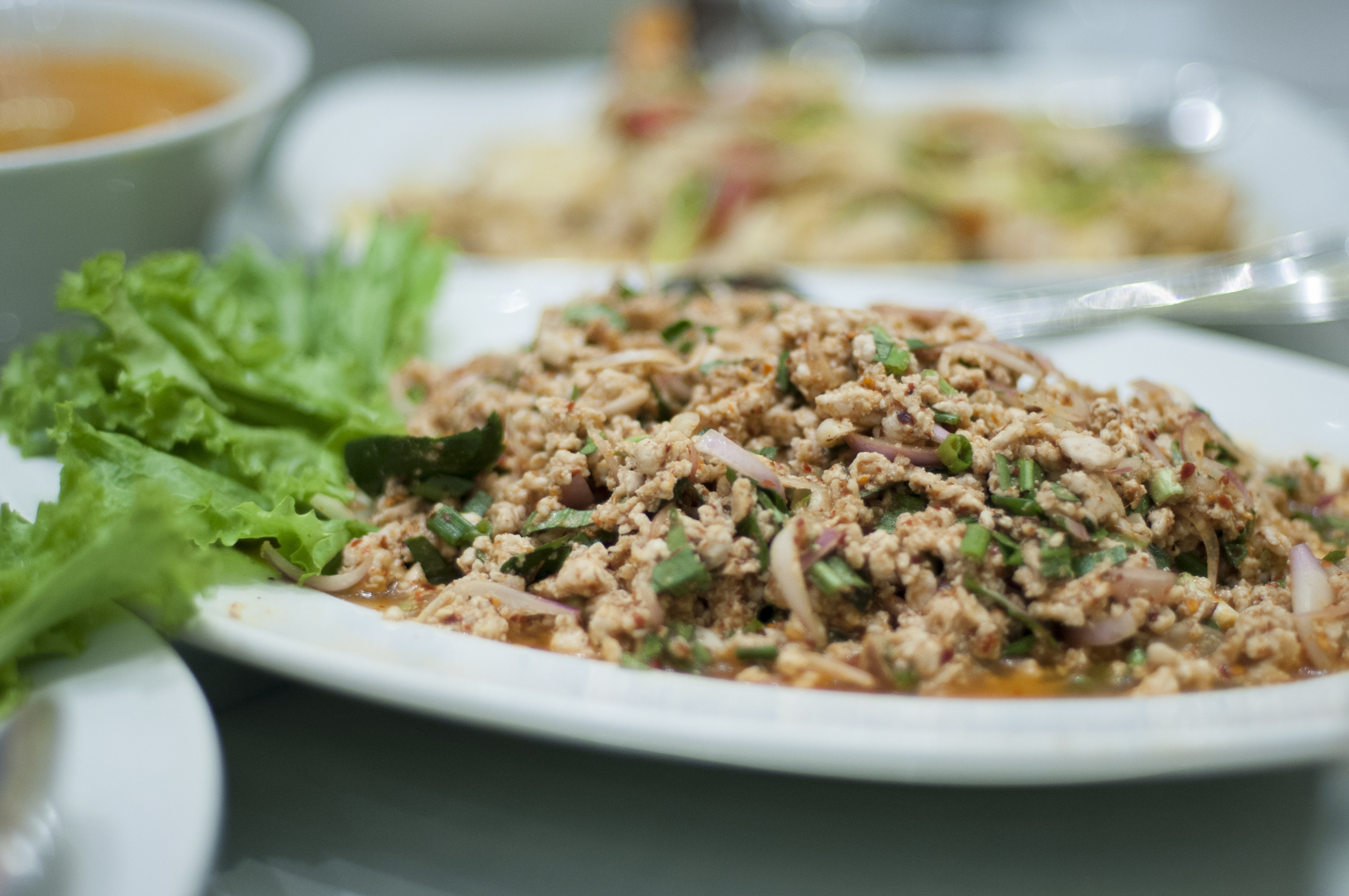
Larb is a minced meat salad that happens to be the national dish of Laos, consisting of minced pork, chicken, or beef mixed with fresh herbs, lime juice, fish sauce, and toasted rice powder. Usually served with sticky rice, this is typically served along with a side of raw vegetables. It had this perfect balance of savory, tangy, and spicy flavors that made it an absolute favorite among locals and visitors alike. Traditionally, it is made with raw or cooked meat, with that depending on personal preference. What's more, the addition of toasted rice powder creates an unique nutty aroma and slight crunch. Larb is more than a meal; it's a sign of hospitality and is served during celebrations or family gatherings.
2. Sticky Rice (Khao Niew)
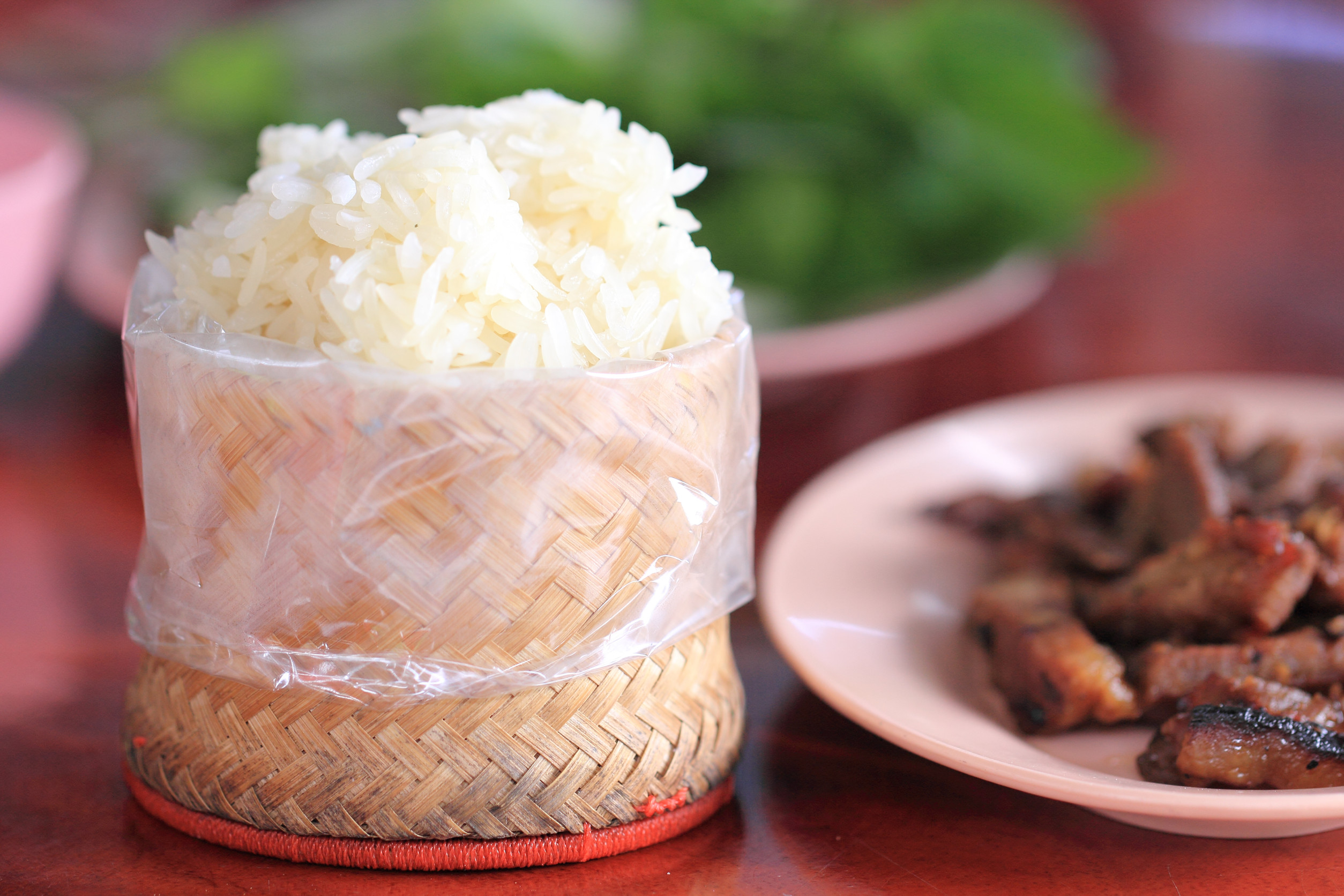
Although sticky rice is the staple food in the whole of Laos, to the people, it is called the heart of Lao cuisine. Sticky rice accompanies almost any meal and is prepared to a soft, clumpy texture, easily manageable by hand. It goes well with just about all Lao dishes, from curries to grilled meats. Traditionally, sticky rice is steamed in a bamboo woven basket, which enhances the flavor and texture. It is eaten by making small lumps of rice into bite-sized balls, adequate for dipping into sauces or collecting hefty dishes. Sticky rice represents one of the major cultural pieces in Laos, uniformed through shared meals taken throughout the nation.
3. Tam Mak Hoong (Lao Papaya Salad)
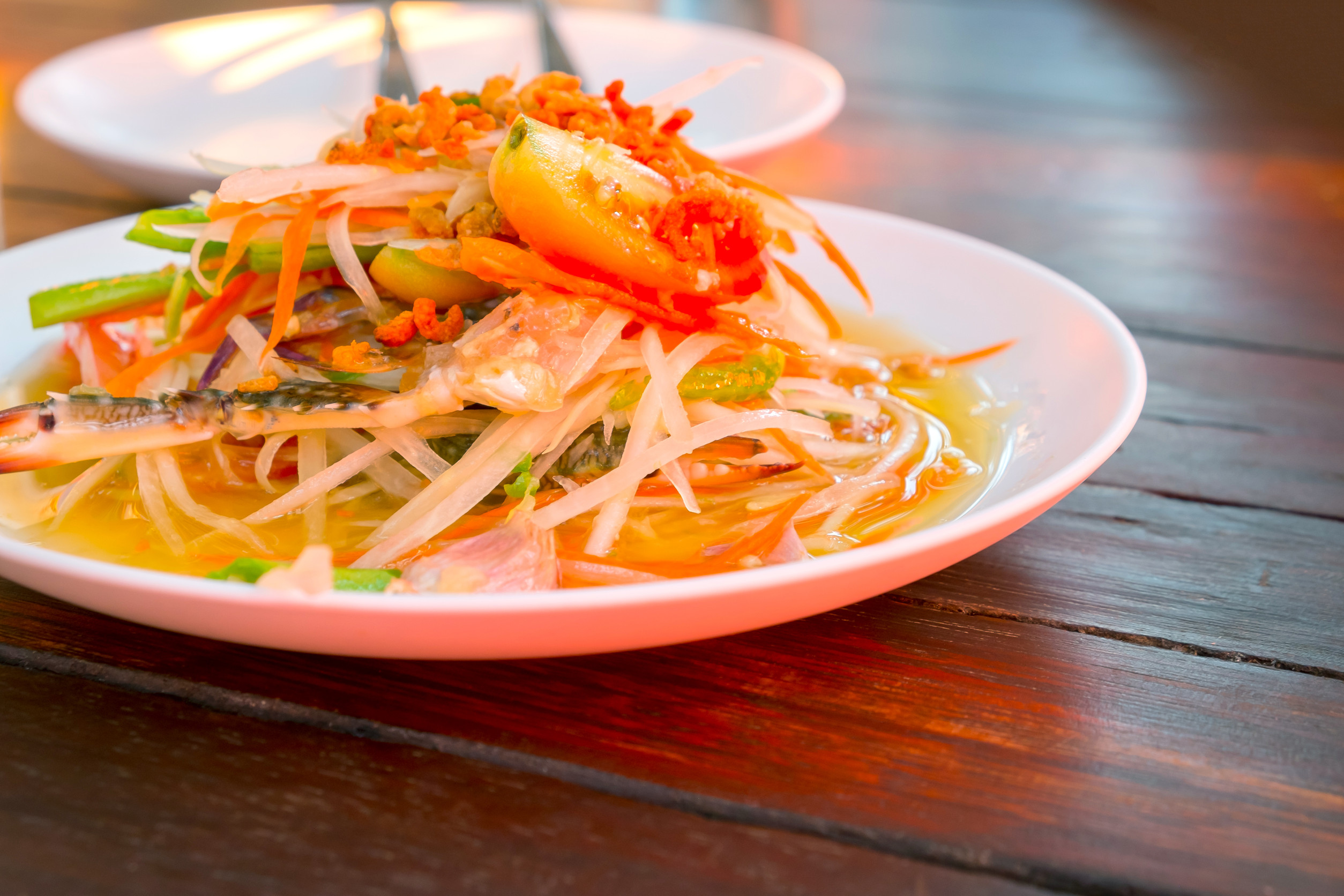
The Tam Mak Hoong is one of the common salads in Laotian cuisine, made from shredded unripe papaya, juice of lime, chili, fish sauce, garlic, and fermented fish paste. Unlike the Thai version, Lao papaya salad is sour and umami and is usually served with sticky rice and grilled meats.
It has options for every given level of spiciness that a person may prefer. Then there is that fermented fish paste that adds its rich, earthy depth to a salad uniquely Lao. Tam Mak Hoong is a street favorite that refreshingly cools people as they go through Laos' tropical heat.
4. Khao Poon-Lao Noodle Soup
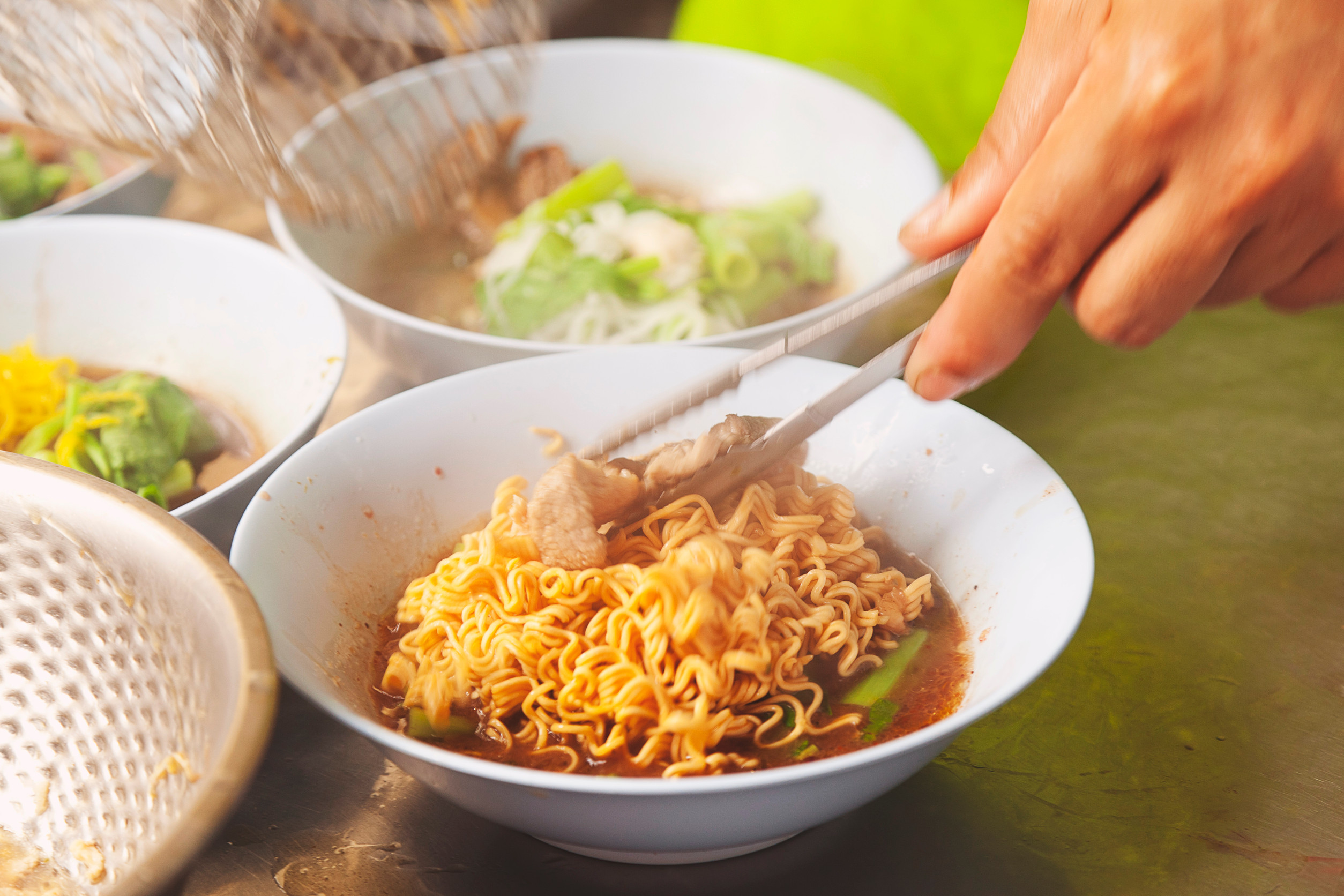
Khao Poon is a spicy and fragrant noodle soup prepared with rice vermicelli, coconut milk, and a rich broth seasoned with lemongrass, chili, and fish sauce. It is served with shredded chicken, pork, or fish and garnished with a bunch of fresh herbs and vegetables. This is a dish that can vary significantly depending on the region it is from. Fresh bean sprouts, wedges of lime, and shredded cabbage add freshness and texture. Khao Poon is prepared for special occasions, weddings, and festivals and is, therefore, comfort food in Lao culture.
5. Sai Oua (Lao Sausage)
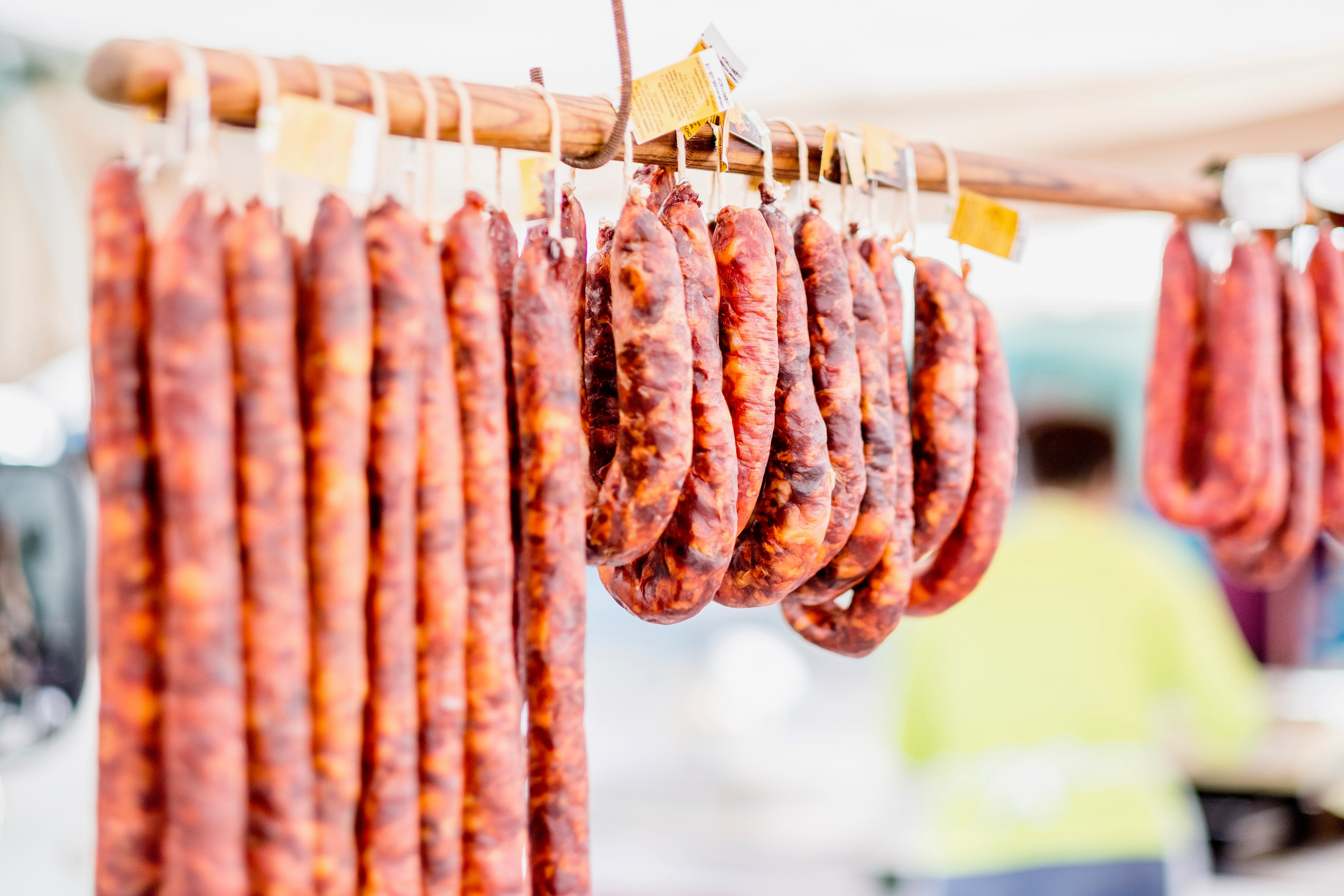
Sai Oua is a traditional Lao sausage made from ground pork mixed with herbs, spices, and aromatic ingredients such as lemongrass, kaffir lime leaves, and galangal. It is usually well grilled and served either as an appetizer or with sticky rice and accompanied by a dipping sauce. The bold flavors of the sausage are from its fresh herbal and spice composition, which makes it one of the popular dishes in Laotian cuisine. Sai Oua is not only very popular at restaurants but also at street food stalls. It is a highlight of any social gathering and, of course, is always accompanied by beer or any other drink that complements the occasion.
6. Or Lam – Lao Stew
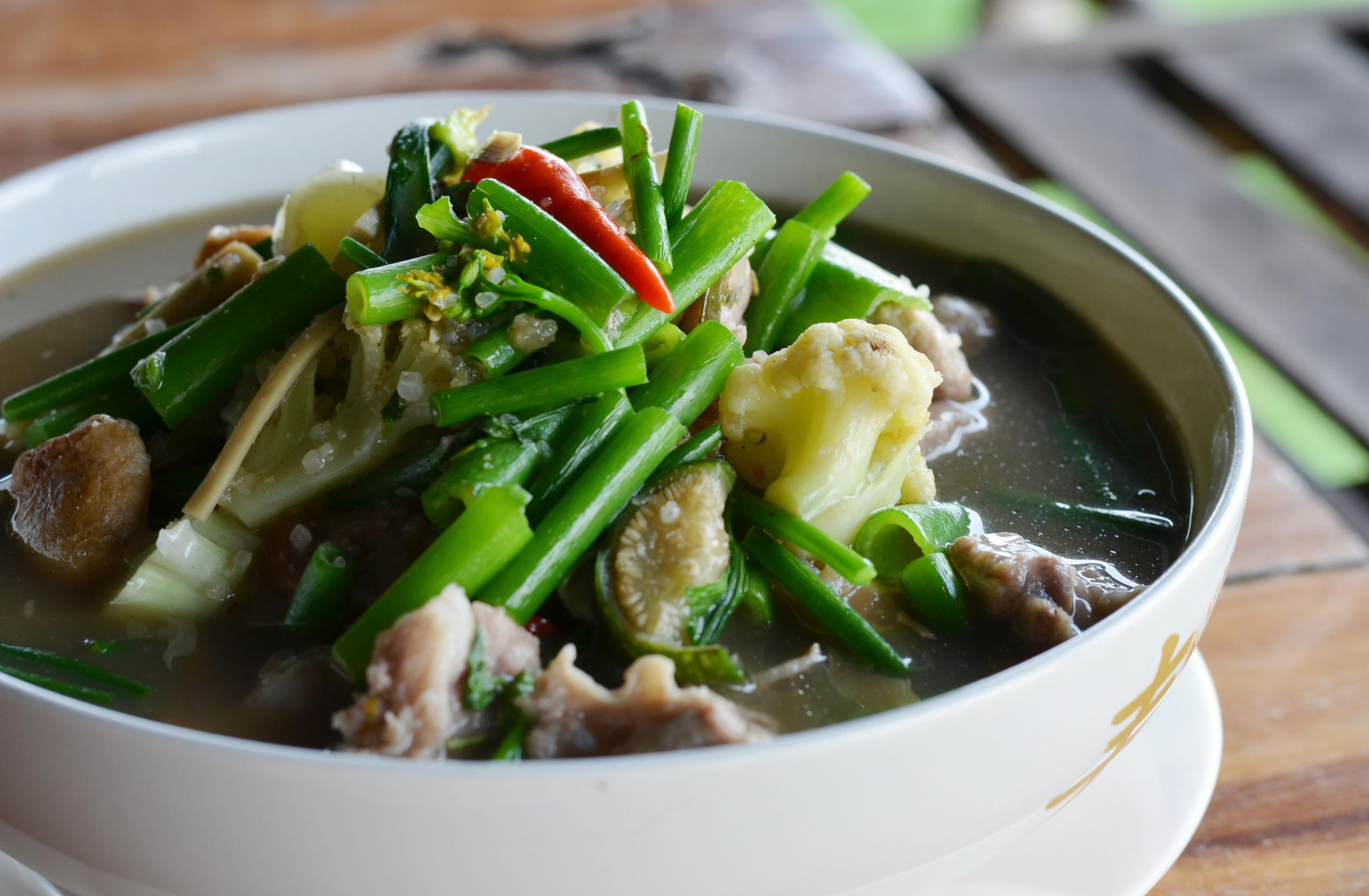
Or Lam is thick stew originating from northern Laos; it is prepared with a mixture of vegetables, mushrooms, eggplant, and tender meat, either buffalo or chicken. The special taste and aroma of the dish are given by lemongrass, chili, and sakhaan-perfuming. Traditionally, sticky rice is served with Or Lam, making it a complete and satisfying meal. The sakhaan, which is a key ingredient, gives the stew a slightly numbing sensation that enhances its depth of flavor. Or Lam reflects the importance of fresh, locally sourced ingredients in Lao cuisine and is a must-try for those seeking an authentic taste of Laos.
7. Mok Pa (Steamed Fish in Banana Leaves)
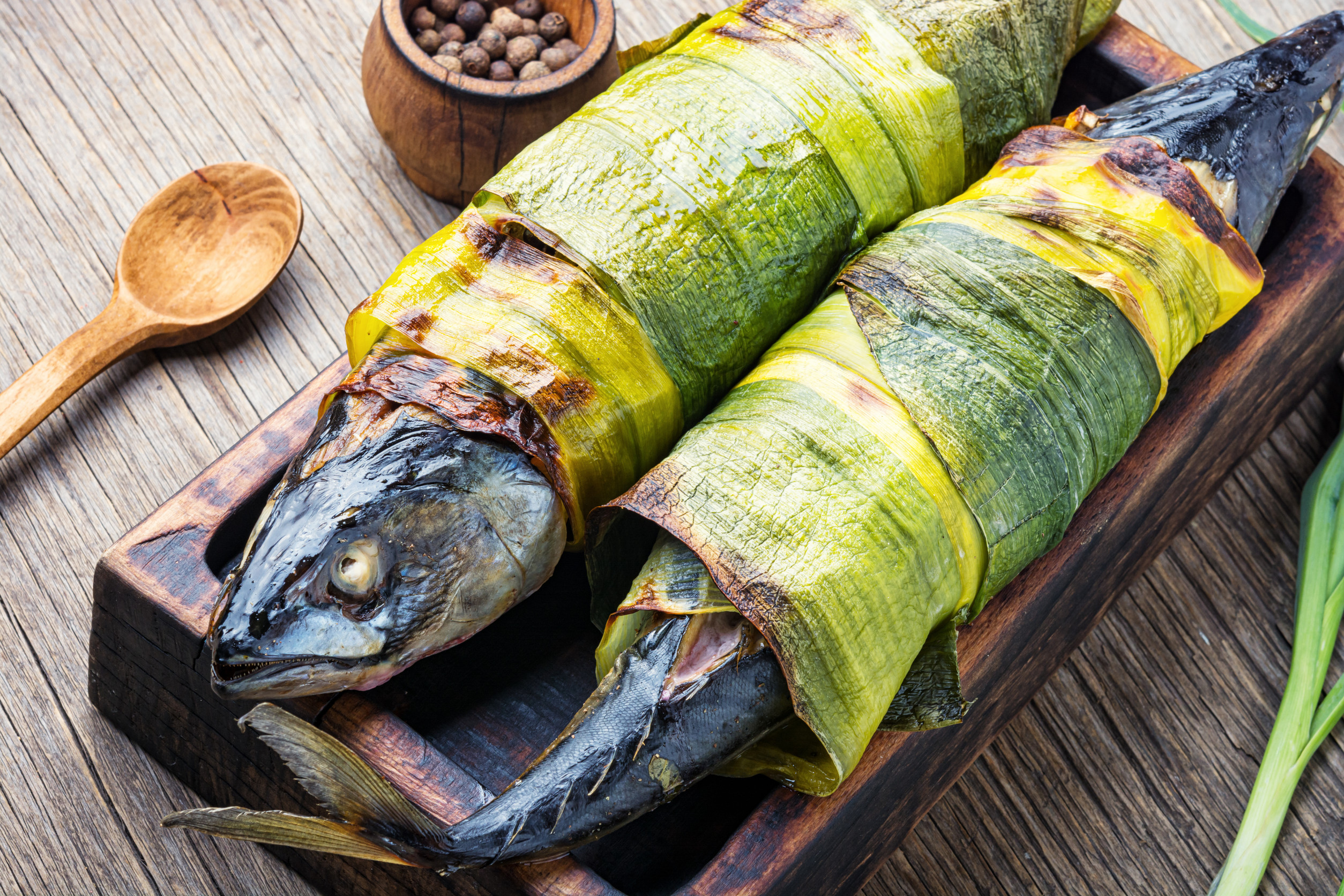
Mok Pa is a kind of steamed fish marinated in a mixture of lemongrass, kaffir lime leaves, and fish sauce, then wrapped in banana leaves and steamed until perfect. The fish will absorb all the fragrant herbs and spices. This traditional Lao dish is usually served with sticky rice and expresses the simplicity and profundity of Lao cooking techniques with fresh, local ingredients. Mok Pa is mostly made for family gatherings or special occasions and is a healthy, delicious dish for anyone trying Lao food.
8. Khao Jee (Lao Baguette Sandwich)
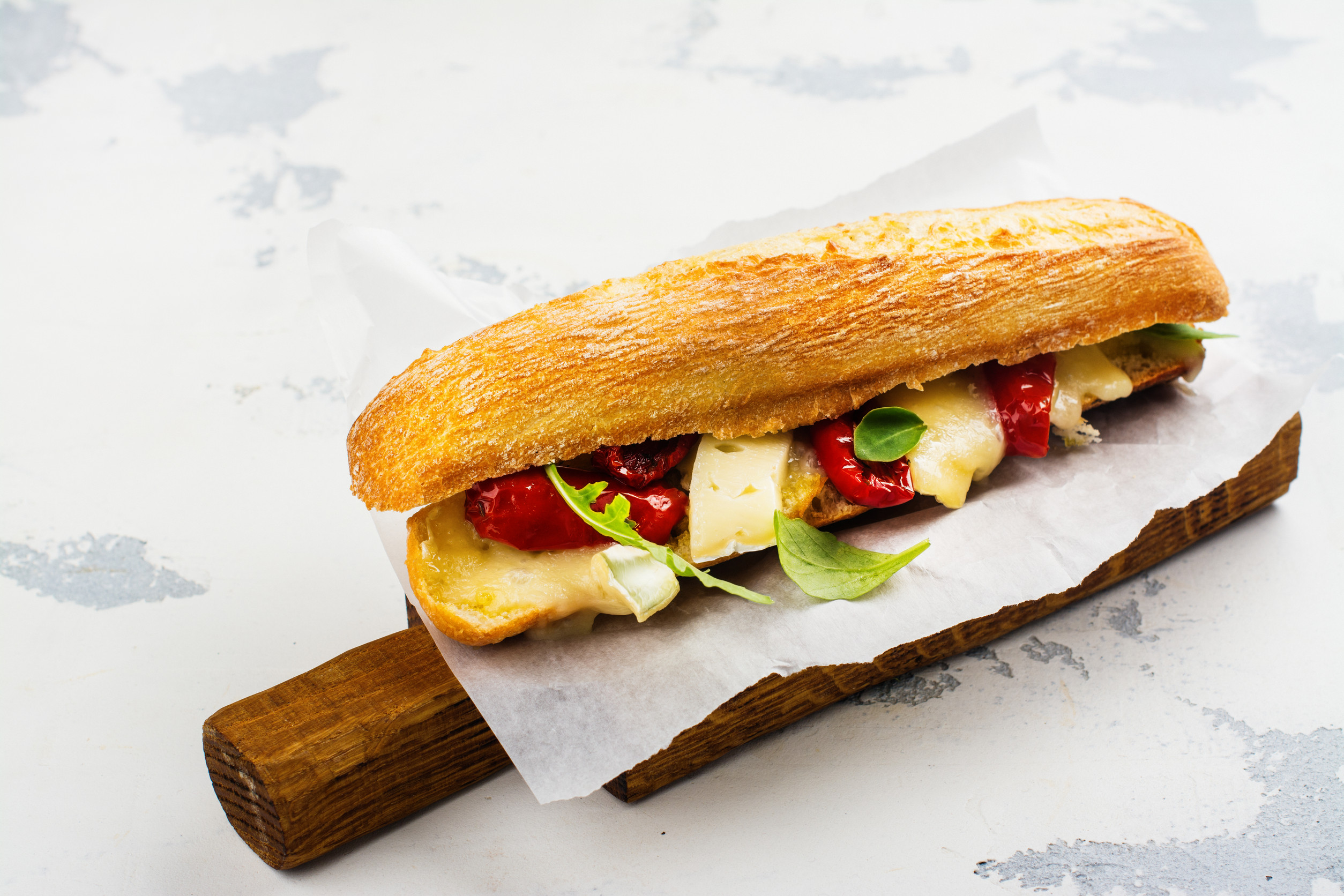
Khao Jee is a Lao-style baguette sandwich that has been influenced by French colonialism, with a filling of meats, pâté, pickled vegetables, and herbs. It's a popular street food and one of the go-to snacks for locals and travelers. The baguette is toasted lightly, yielding a crunchy outside but soft inside. Variants of Khao Jee can include spicy sauces or extra fillings, hence it is good to eat for any time of the day. Its mix of French and Lao flavors gives a hint of the cultural combination found in Lao cuisine.
9. Ping Gai (Grilled Chicken)
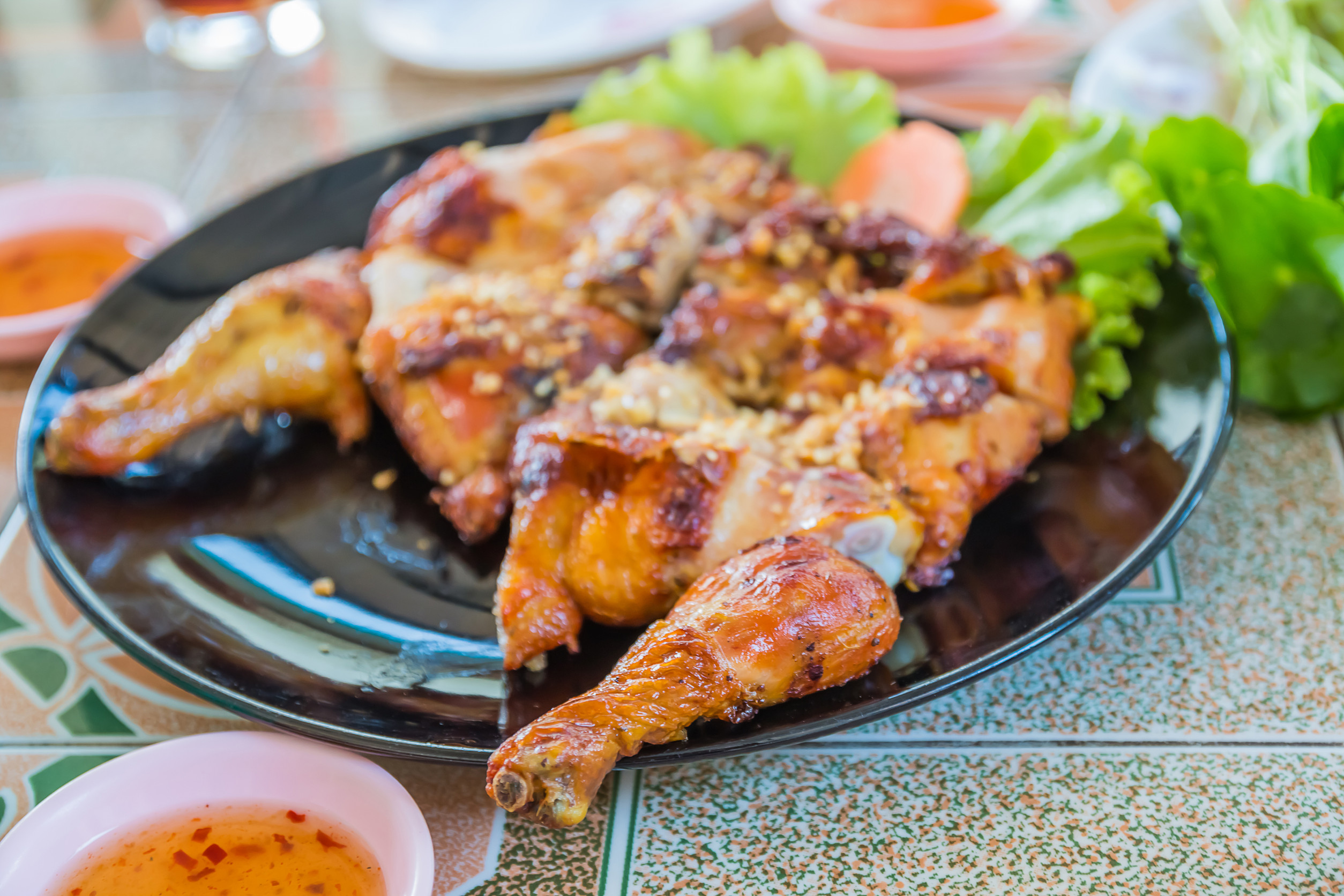
The grilled chicken marinates in a mixture of garlic, ginger, soy sauce, and lemongrass; Ping Gai is a simple yet savory dish. This dish is generally barbecued over charcoal for that smoky flavor and served with sticky rice with spicy dipping sauces. This is also one of the staple dishes in Lao street food stalls and family barbecues to serve tender and flavoursome meat. It gets even better with the dipping sauces made from chili and fish sauce. Ping Gai is one good example of how Lao recipes transform simple ingredients into mouthwatering delights.
10. Nam Khao - Crispy Rice Salad
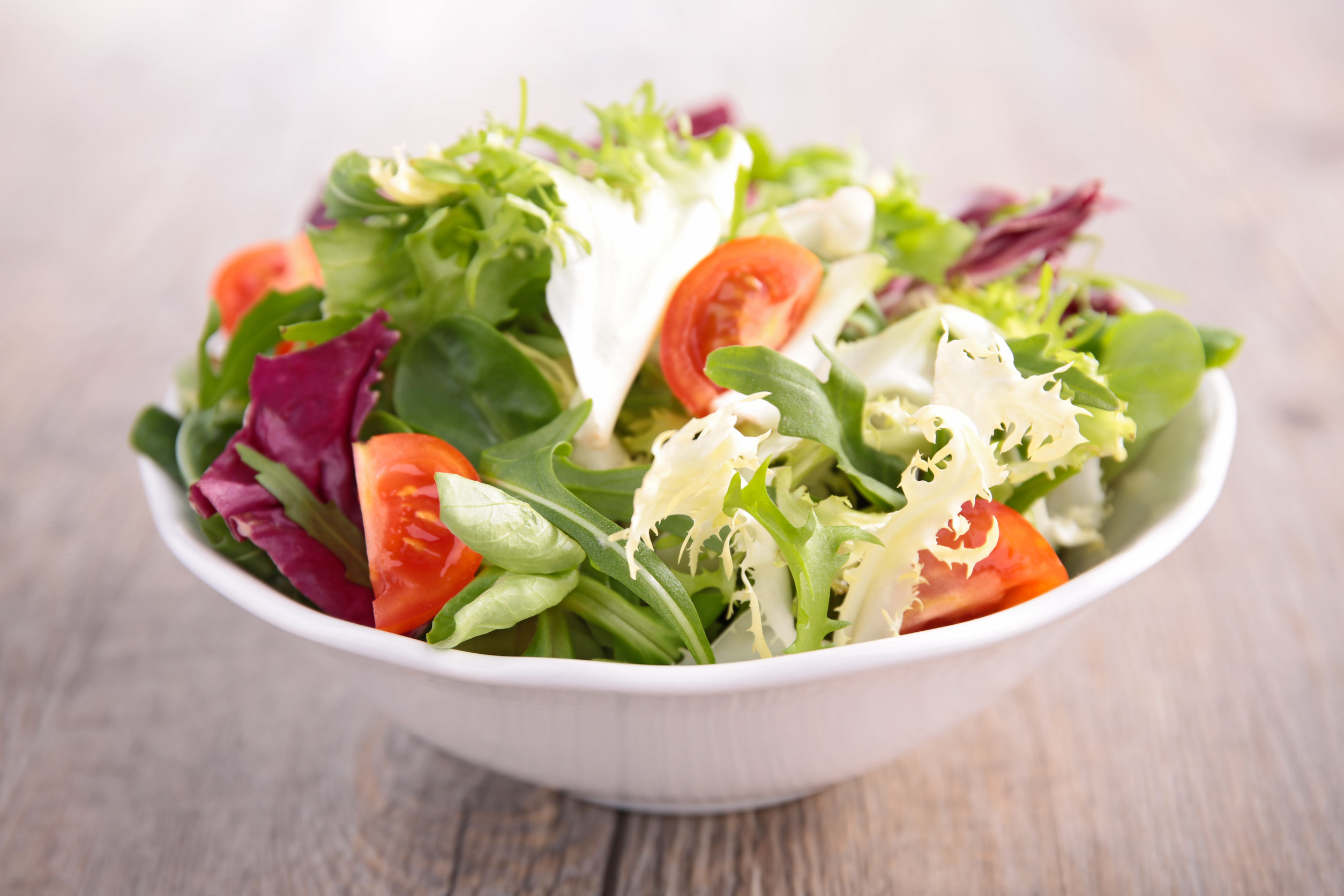
Nam Khao is a fresh and crunchy salad comprising deep-fried rice balls that were mixed with cured pork, fresh herbs, lime juice, and peanuts. Nam Khao is highly recommended for any person who seeks to try something light yet tasting. Crispy rice with the tenderness of cured pork will make this dish unique and worth trying. Normally, this dish is prepared as an appetizer or side dish; Nam Khao is always served with fresh lettuce leaves on the side to wrap this mixture for more crunch. The combination of sour, savory, and nutty flavors makes it a must-try for visitors exploring Lao cuisine.
Dining Etiquette in Laos: Do’s and Don’ts for Food Enthusiasts
Dining in Laos is not just about enjoying flavorful dishes; it’s also an opportunity to immerse yourself in the country’s rich cultural traditions. Understanding Lao dining etiquette can help you show respect and appreciation for the local customs while making your dining experience more enjoyable.
|
Do’s |
Don’ts |
|
Use Your Right Hand: Always eat sticky rice or other foods with your right hand, as the left is considered unclean. |
Avoid Pointing Your Feet: Never point your feet at others or towards the dining area; it is seen as disrespectful. |
|
Share Dishes: Take small portions from shared plates to ensure everyone has enough to enjoy. |
Don’t Leave Food Unfinished: Leaving food on your plate is wasteful and considered disrespectful. |
|
Wait for the Elders: Let elders or the host begin eating first as a sign of respect. |
Refrain from Using the Left Hand: Avoid passing or touching food with your left hand. |
|
Express Gratitude: Thank your host or cook with a smile or say “khop chai lai lai” (thank you very much). |
Don’t Rush the Meal: Meals are leisurely and meant for bonding. Avoid hurrying through them. |
Conclusion
Lao cuisine is a reflection of the country’s rich cultural heritage and love for bold, natural flavors. Whether you’re exploring street food markets or dining in local restaurants, these popular dishes showcase the essence of Lao culinary traditions. From savory salads to hearty stews, each dish tells a story of Laos’s history, geography, and vibrant food culture. Be sure to indulge in these culinary delights on your next visit to Laos!
Steps To Secure Your eVisa for Laos
-
Step1: Fill out the online eVisa application by providing your passport details.
-
Step2: Make the payment online using a credit / debit card.
-
Step3: Check your email for the payment confirmation and the electronic delivery of your visa.
